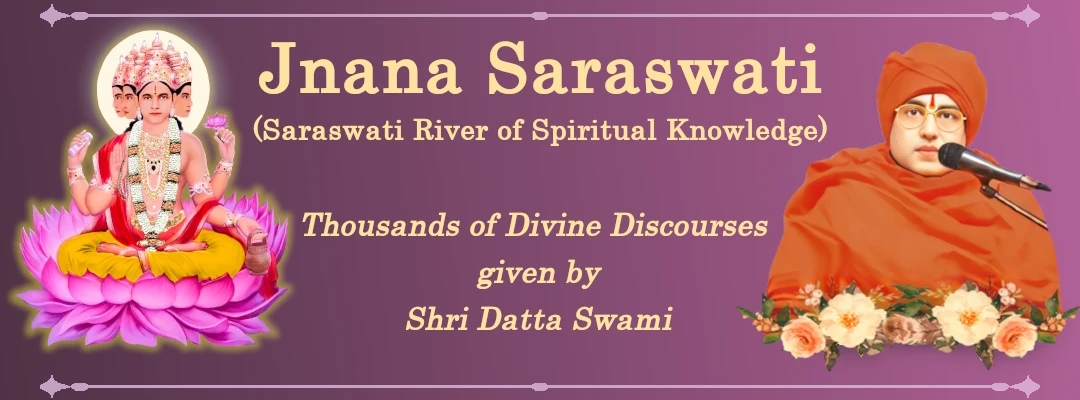

*Also try the new Advanced search options
Caste system Yoga & Meditation Corruption Gayathri Yajnas Temples & Rituals Atheism Terrorism Pravrutti Hinduism Christianity Islam Unity of religions Human Incarnation Karma Yoga Madhura Bhakti Advaita Unified Vedanta
Swami replied:- Temples and statues are necessary for low level people as said in the Shastra (Pratima Swalpa Buddhinaam). It is a teaching...
Swami replied:- The statue or picture is an inert object. The form carved in a stone or painted on a paper is also an imaginary form and not...
[Durgashtami Message] Significance of Temples: Why is there so much rush in temples? There is only one reason. People think that if they go to the temples they can escape from the difficulties, which are the fruits of their sins. They also think that they can get some benefits (which are the fruits of good deeds) for good deeds that they have not performed. Obviously this is not true. The scriptures say “Avashyam Anubhoktavyam” which means that we must enjoy...
Punishment for Sins: When a policeman beats a thief with his stick the thief should not think that the stick is beating him. Of course the stick is directly beating him, but the stick is inert and cannot beat him by itself. It is the policeman who is beating him with the stick. If the thief prays to the stick there is no use. Even if he prays to the uniform of the policeman, there is no use. He should only pray to the policeman, who wears the uniform and holds the stick. The uniform is also inert. Since the thief...
The original Hindu tradition in ancient times when rishis (sages) existed was the most precious diamond in the world. There is no trace of doubt in this statement. But today the tradition has turned into charcoal. Perhaps many of you do not know that diamond and charcoal are two forms of same element i.e., carbon. When the carbon atoms are in a crystalline state, it is diamond. The same carbon atoms in an amorphous state are charcoal. The substance is same but the arrangement of atoms differs. Therefore, the same tradition was re-arranged and twisted. The tradition lost the brilliant shine of a diamond and has now acquired a black color. The diamond is very strong and cannot be cut. But the charcoal is easily broken. Thus, the strength of the ancient tradition has been completely lost...
A temple represents the body of the human incarnation (Deho devaalaya proktah). The statue in the temple represents the Lord in a human body (Jeevo devah sanatanah). The Gita also says that the Lord enters a human body and comes down to this earth (Manusheem tanum aashritam). The Veda says that the Lord can be seen here on the earth itself (Yat saakshat aparokshaat Brahma). The temple and the statue are only models to teach this concept. Once the concept is understood there is no need of any model. Hanuman recognized the human incarnation (Lord Rama) and sacrificed all his work to the Lord. Hanuman was not a householder and so he did not possess money to sacrifice to the Lord...
Hindus are spending lot of money on ritualistic functions like marriage etc., in which the major item is serving expensive varieties of food. The receivers of this food are mainly relatives and friends invited based on your blind passion for relatives and your attitude of business to friends. The donation of food is ‘Annadaanam’ and for any donation, the receiver must be an eligible person, selected not based on relationship or friendship. The eligibility is due to the spiritual knowledge and devotion of the person to God. Otherwise, you are giving food to un-deserving receivers, who may be your relatives and friends. In Mahabharata, the sage Vyasya told that donation to deserving person brings good fruits...
*In case of any difficulty, use simple search option